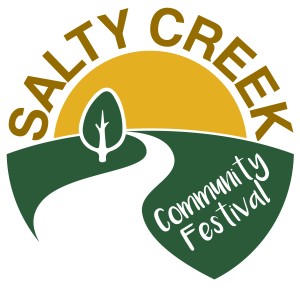Creating your own sustainability goals
You can incorporate sustainable practices into your everyday life by creating sustainability goals for yourself. See how Sammie teaches a festival volunteer to come up with their own goals…
![]()
![]()
Nico, a volunteer at the Salty Creek Community Festival, is interested in sustainability and what he can do to be more sustainable in his day-to-day life. He notices that the festival co-lead, Sammie, is involved in the festival’s sustainability planning. He decides to approach Sammie and ask them and ask for advice on how he can live more sustainably.
Read Sammie’s response.
 “I’m glad you asked! I’m always happy to talk about sustainability and help others make sustainable practices part of their everyday lives.
“I’m glad you asked! I’m always happy to talk about sustainability and help others make sustainable practices part of their everyday lives.
My advice? Start by coming up with some of your own sustainability goals. The United Nations has a great list of sustainable development goals (SDGs) that you can use for inspiration. Some of them are a bit tricky to tackle as an individual, but they’re a great reference when trying to think of your own goals. The SDGs cover a range of areas as well — I suggest having a look through them all and picking the topics you are most passionate about, and then working from there.
There’s a trick to creating your own goals. When I first created mine, I wanted to do something related to SDG 14 – Responsible consumption and production, but I had no idea how to create a goal and hold myself accountable. I just made vague promises to myself, like “I’m going to buy more clothes second-hand to reduce fashion waste”. I didn’t write it down or anything, so within a few weeks, I had forgotten my goal and didn’t stick to it.
After that, I realised the best way to come up with a sustainability goal that you will commit to is by breaking it down into sections and being specific about what you want to achieve, how you will achieve it, and when you want to achieve it by. That way, you’ll be more likely to follow through with it. I even created a template for myself with different sections to fill out for each personal goal I come up with. I can send it to you if you want.”
Nico decides to go off and write his own goal, using Sammie’s template. He starts by looking at the SDGs on the UN’s website for ideas. He then thinks about how much money and spare time he has, what his responsibilities are at work and home, his influence in the community, and what he can realistically achieve.
After some careful consideration, Nico comes up with his new goal.
Select each section to see how Nico has written out his goal.
Nico’s sustainability goal transcript
Reflect
Think about things you can do in your day-to-day life to be more sustainable (you can have a look at the UN’s SDG site for inspiration). Try and think of two or three things you could be doing differently. Remember, coming up with your own goals doesn’t have to be time-consuming, expensive, or difficult. You can start off with something small, like buying and using a reusable water bottle or coffee cup to help reduce waste, and work your way up to bigger things, like going completely plastic-free.
Now that Nico’s created his first personal sustainability goal, he’s excited to start putting it into practice. Nico might not be able to achieve all of the SDGs on his own, but he knows his goals help contribute to some of the larger sustainability targets, like reducing global food waste.
Making your own sustainability goals is a great way of incorporating sustainable practices into your life and holding yourself accountable. It also helps expand and demonstrate your sustainability literacy, which is a very valuable skill in many courses and workplaces. You can set goals for work, study, or your day-to-day habits at home. Remember, sustainability is not just about the environment either — you can set goals that contribute to things like gender equality, fair and inclusive work, and/or ending hunger.

- Sammie’s trying to teach all the volunteers about sustainability. Check out the Making a festival sustainable page to see their presentation. (10 to 15 minutes)
Learn more on Learning Lab
- Visit the Make your own sustainability goal page to write and download a copy of your own goals. (10 minutes).
- Explore United Nations Sustainable Development Goals (SDGs) to learn more about the UN and the original 17 SDGs. (10 minutes)
The United Nations Sustainable Development Goals are a collection of goals with targets and methods, shared by a global partnership of developed and developing nations. They focus on a range of interconnected issues and aim to improve sustainability and quality of life globally.
A person who possesses the knowledge, skills, and mindset of sustainability literacy recognises the importance of building a sustainable future. They can make informed and effective decisions to this end by considering a balance between social wellbeing, economic stability, and care for the environment.

